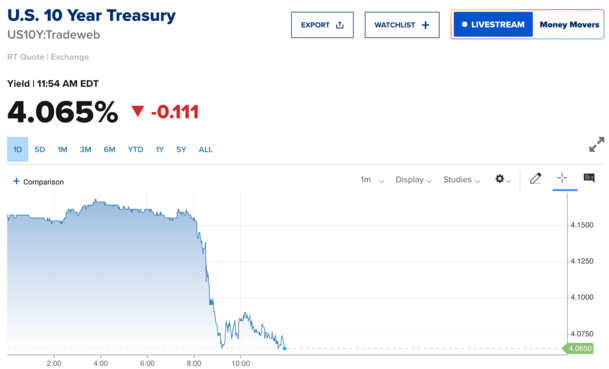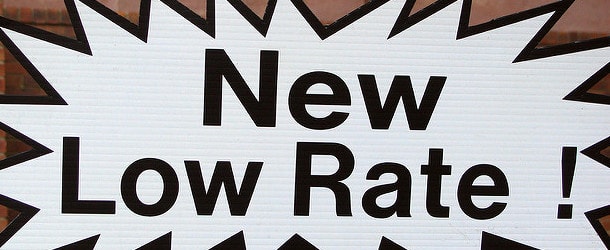Well, this morning’s jobs report delivered, assuming you were looking for even lower mortgage rates.
If you were rooting for a strong economy, that’s a different story entirely.
In the meantime, the weak labor report for August will be a boon for prospective home buyers struggling with affordability.
And perhaps more immediately, it will make many more refinances pencil for existing homeowners.
It’s a little bittersweet given it comes at the expense of the economy, which is beginning to look very fragile.
Another Ugly Jobs Report Delivered After Firing of Former BLS Commissioner

Driving mortgage rates lower today was another poor jobs report, with the Bureau of Labor Statistics showing nonfarm payroll employment of just 22,000 in August.
That was well below the median estimate of 75,000 new jobs created. And much of the job gains came via health care and social assistance, not exactly a bright spot for the economy.
In addition, the weak June numbers were revised down by 27,000 to a negative 13,000, while July was revised up marginally by 6,000 to 79,000.
The unemployment rate ticked up to 4.3% from 4.2%, average hourly earnings increased 0.3% for the month, and YoY hourly wage gains dipped to 3.7%, below the 3.8% consensus.
There was some question as to whether the jobs report would surprise to the upside after the firing of the BLS commissioner due to the previous bad jobs report.
But that clearly wasn’t to be. Simply put, it was another really ugly jobs report, enough to send the 10-year bond yield down 10 basis points or so toward 4%, per CNBC.
As such, mortgage rates are looking really good today for those who are gainfully employed, which is kind of the rub here.
A slowing economy works wonders for mortgage rates, but it makes you wonder if it puts the housing market in a worse spot.
The Return of 5% Mortgage Rates
It’s been a while since we’ve talked about 5% mortgage rates, but I’m seeing a lot of quotes in this range today.
No, we aren’t quite at 5% even, but instead of rates starting with a 6, they’re now often starting with a 5.
That will be welcome news for those looking to apply for a rate and term refinance, as the marry the house, date the rate strategy perhaps finally pans out.
It will also make life a little easier for prospective home buyers struggling with poor affordability.
Contrary to popular belief, there isn’t an inverse relationship between home prices and mortgage rates.
So we could see a scenario where both rates and prices fall in tandem, providing much needed relief on monthly mortgage payments.
For example, Wells Fargo was advertising both a 5.5% 30-year fixed for VA loans and a 5.25% rate for a 15-year fixed conventional loan this morning.
Meanwhile, Chase was showing a slew of rates in the 5% range, including a 5.75% 30year FHA loan and a 30-year jumbo at 6% flat. So it’s possible that too dips into the high 5s if this trend continues.
Over at U.S. Bank, they were advertising a 30-year fixed at 6.125%, but a 20-year fixed at 5.75%.
Mortgage News Daily pinned the 30-year at 6.29%, down from 6.45% yesterday, its lowest point in nearly a year.
If you recall, the 30-year fixed was hovering around 8% as recently as October 2023. And began 2025 at roughly 7.25%.
So it’s come down quite a lot over the past couple years since seemingly peaking back in the fall of 2023.
Is the Worst Behind Us?
This does make you wonder if the worst is behind us for mortgage rates, assuming inflation doesn’t turn higher due to all the tariff turmoil.
Similar to last year, when rates fell a ton leading up to the eventual Fed rate cut in September, there is still other data beyond the jobs report.
For example, we’ve got PPI and the CPI report on deck next week. So there is a risk mortgage rates could bounce higher if that data comes in hotter than expected.
This is always the risk when mortgage rates fall a lot in a relatively short amount of time. You see corrections of sorts.
Rates are slow to fall, but quick to rise.
So watch out for a possible reversal next week if prices show signs of rising, which is certainly a possibility.
Just anecdotally, it feels like everything got more expensive lately, and maybe that shows up in these reports going forward.
There’s also the question of how the BLS labor report eventually looks under new leadership.
But today’s jobs report certainly doesn’t bode well for the economy on the whole, with inflation still a concern and weak growth and rising unemployment potentially leading to stagflation.
Even if mortgage rates are lower a result.
